java webflux注解方式写一个可供web端访问的数据接口
简单创建了一个实体类创建了三个字段name用户名称gender性别age年龄写了他们对应的get set 和 一个有参构造方法。然后在senvice下创建一个包叫impl用于存放实现类在下面创建一个类叫UserServiceImpl。我们实现了UserService接口因为我们这次并不打算操作数据库所以 所有的操作都是通过Map集合实现的。然后 我们如下图找到他的启动类进行一个启动。
首先 创建一个 Spring initiolar 项目
然后 找到项目配置文件 pom.xml
引入webflux 和 web
参考代码如下
<dependency>
<groupId>org.springframework.boot</groupId>
<artifactId>spring-boot-starter-web</artifactId>
</dependency>
<dependency>
<groupId>org.springframework.boot</groupId>
<artifactId>spring-boot-starter-webflux</artifactId>
</dependency>
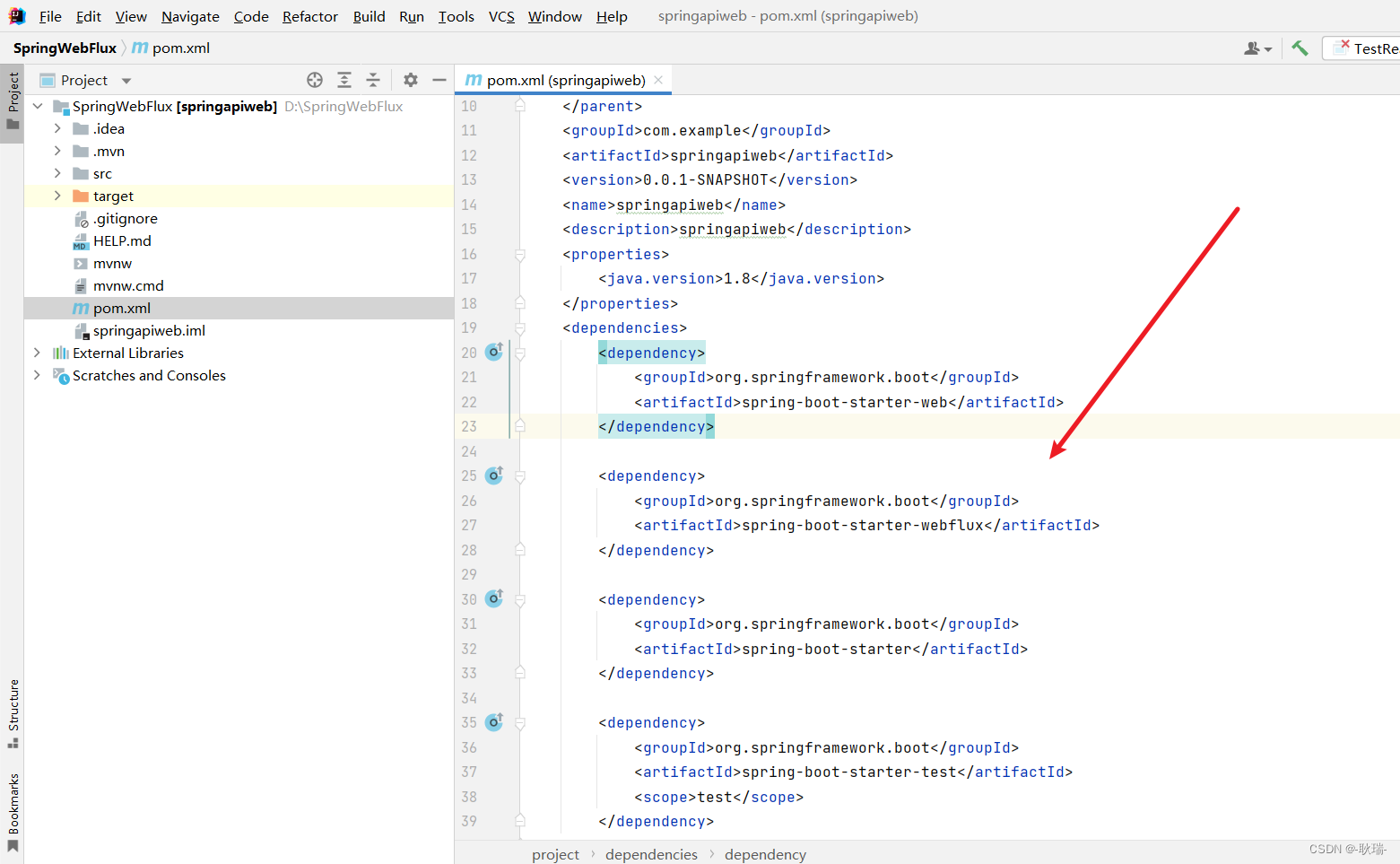
然后在项目中打开如下图目录文件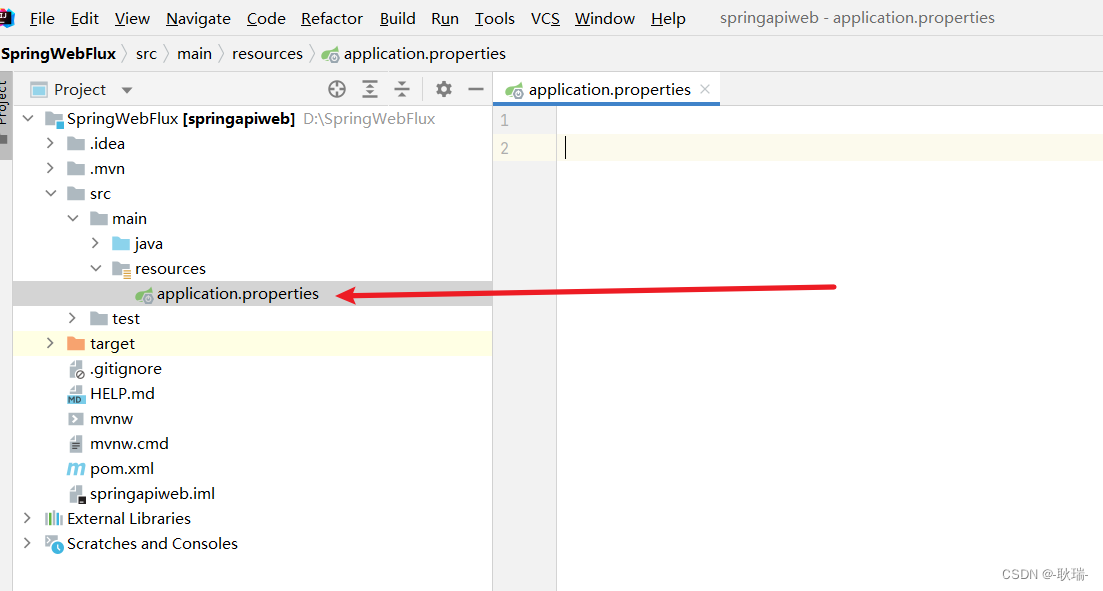
就在这个文件中设置一个端口号 参考代码如下
server.port=8081
然后 打开项目如下图箭头所指的这个目录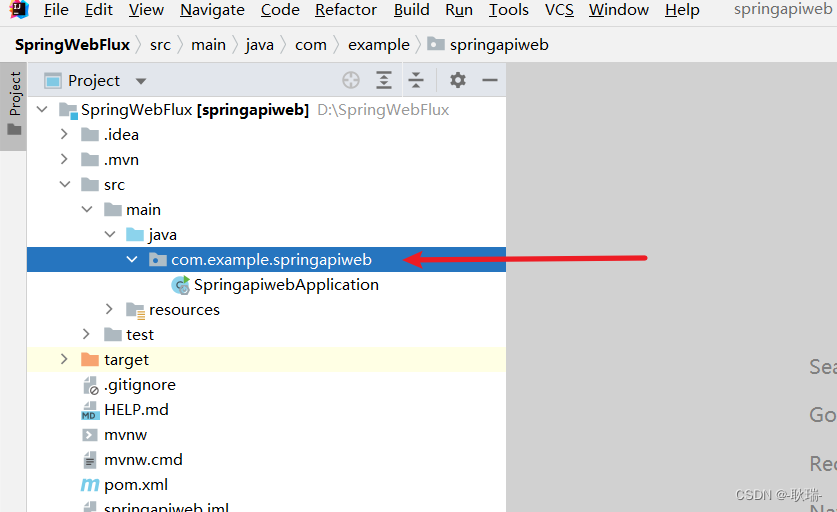
在项目创建我们项目所需要的结构包 entity,controller,senvice
然后 我们的项目就是这样的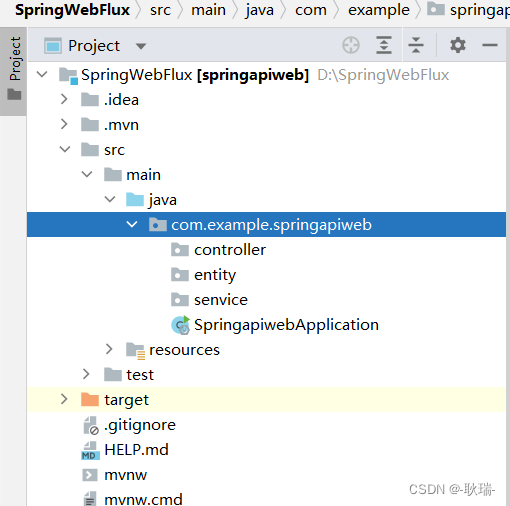
在entity包下创建一个类 叫 User 参考代码如下
package com.example.springapiweb.entity;
public class User {
private String name;
private String gender;
private Integer age;
public User(String name,String gender,Integer age){
this.name = name;
this.gender = gender;
this.age = age;
}
public void setName(String name){
this.name = name;
};
public void setGender(String gender) {
this.gender = gender;
}
public void setAge(Integer age) {
this.age = age;
}
public String getName(){
return this.name;
};
public String getGender() {
return this.gender;
}
public Integer getAge() {
return this.age;
}
}
简单创建了一个实体类 创建了三个字段 name 用户名称 gender 性别 age 年龄 写了他们对应的get set 和 一个有参构造方法
然后呢 我们这个项目就不直接去操作数据库啦
我们在 senvice 包下创建一个接口 叫 UserService
参考代码如下
package com.example.springapiweb.senvice;
import com.example.springapiweb.entity.User;
import reactor.core.publisher.Flux;
import reactor.core.publisher.Mono;
public interface UserService {
//根据id查询用户
Mono<User> getUserById(int id);
//查询所有用户
Flux<User> getAllUser();
//添加用户
Mono<Void> saveUserInfo (Mono<User> user);
}
我们在接口中定义了几个比较简单的用户操作方法
然后在 senvice 下创建一个包 叫 impl 用于存放实现类 在下面创建一个类 叫 UserServiceImpl
参考代码如下
package com.example.springapiweb.senvice.impl;
import com.example.springapiweb.entity.User;
import com.example.springapiweb.senvice.UserService;
import org.springframework.stereotype.Repository;
import reactor.core.publisher.Flux;
import reactor.core.publisher.Mono;
import java.util.Map;
import java.util.HashMap;
@Repository
public class UserServiceImpl implements UserService {
//创建map集合存储教据
private final Map<Integer,User> users = new HashMap<>();
//在构造方法中为map注入几条数据
public UserServiceImpl(){
this.users.put(1,new User("小猫猫","女",2));
this.users.put(2,new User("小明","男",11));
this.users.put(3,new User("服部半藏","男",32));
}
//根据id查询指定用户
@Override
public Mono<User> getUserById(int id) {
return Mono.justOrEmpty(this. users. get (id));
}
//查询所有用户
@Override
public Flux<User> getAllUser() {
return Flux.fromIterable(this.users.values());
}
//添加用户
@Override
public Mono<Void> saveUserInfo(Mono<User> userMono) {
return userMono.doOnNext(person -> {
//向map集合里面放值
int id = users. size()+1;
users.put(id,person);
}).thenEmpty(Mono.empty());
}
}
我们实现了UserService接口 因为我们这次并不打算操作数据库 所以 所有的操作都是通过Map集合实现的
要特别说明 我们添加后面特意加一个Mono.empty() 是结束流 不然他就成立一个无限的流了
而Mono只能返回 0-1个元素 而 Flux可以返回N个 所以 这里只有查询所有用户的方法用到了Flux
专业的人 做专业的事 这是一个很基础的术语
而 为了解决一开始 map没数据的问题 我们在构造方法中给他注入了几条数据
然后 通过 Repository 声明了当前的类在注解中
然后 在 controller 包下创建一个类 叫 UserController
参考代码如下
package com.example.springapiweb.controller;
import com.example.springapiweb.entity.User;
import com.example.springapiweb.senvice.UserService;
import org.springframework.beans.factory.annotation.Autowired;
import org.springframework.web.bind.annotation.*;
import reactor.core.publisher.Flux;
import reactor.core.publisher.Mono;
@RestController
public class UserController {
//注入service
@Autowired
private UserService userService;
//id查询
@GetMapping("/user/{id}")
public Mono<User> geetUserId(@PathVariable int id) {
return userService. getUserById(id);
};
//查询所有
@GetMapping("/user")
public Flux<User> getUsers() {
return userService.getAllUser();
};
@PostMapping("/saveuser")
public Mono<Void> saveUser(@RequestBody User user) {
Mono<User> userMono = Mono.just(user);
return userService.saveUserInfo(userMono);
};
}
这样 我们就简单做出了一个webflux的交互案例
讲解一下 PathVariable 通常是通过路径获取参数
RequestBody 则是要通过bodyi去取
然后 我们如下图 找到他的启动类 进行一个启动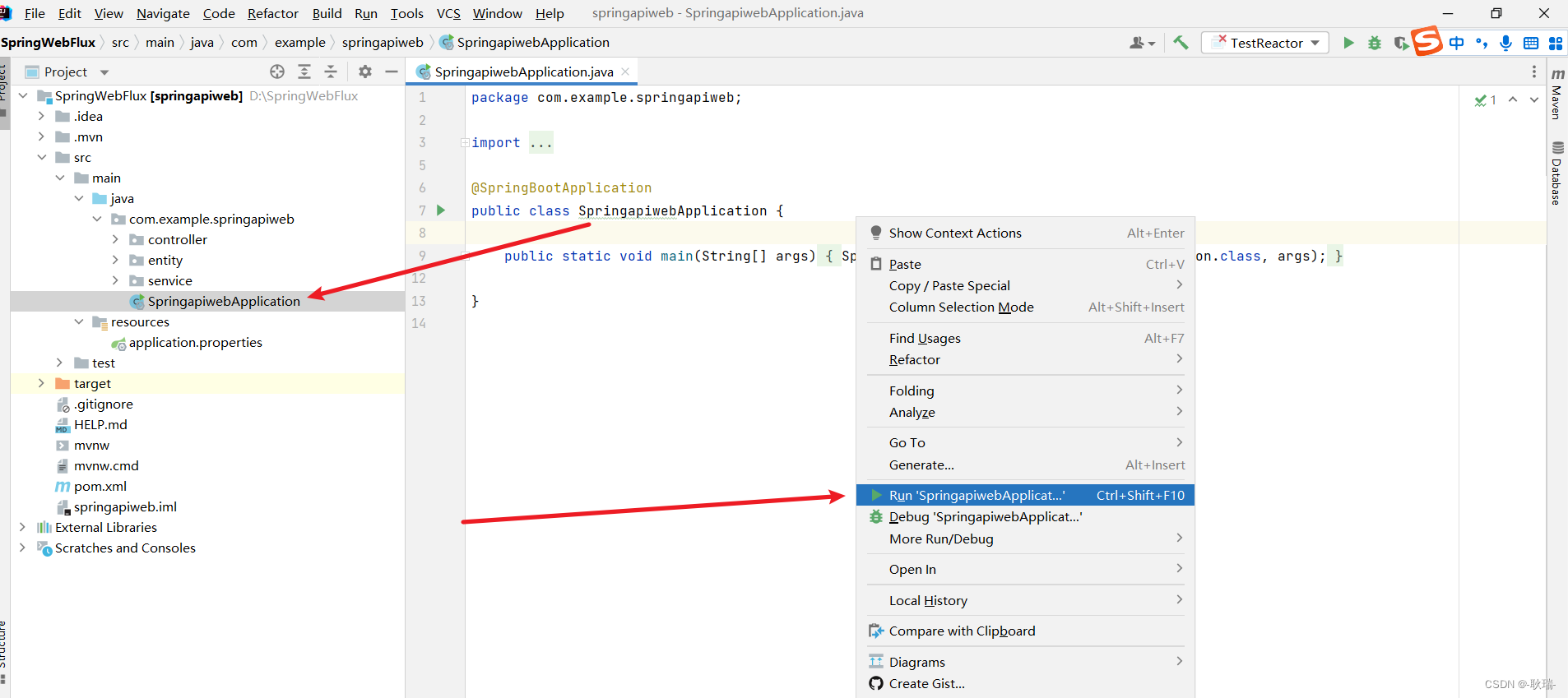
我们的项目就起来了
我们可以看到 目前这里的请求地址 是 本机的 8081
然后我们随便打开一个浏览器 访问 http://localhost:8081/user/1
运行结果如下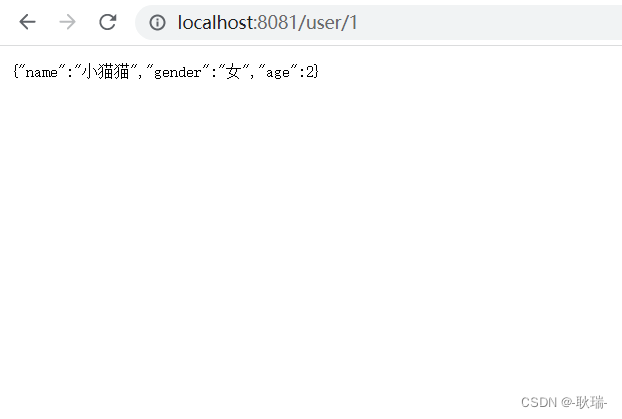
通过你电脑的IP+端口也可以访问 这里 因为没必要暴露 我就不演示IP的用法啦 很基础的东西了
然后我们再通过浏览器直接访问 http://localhost:8081/user
运行结果如下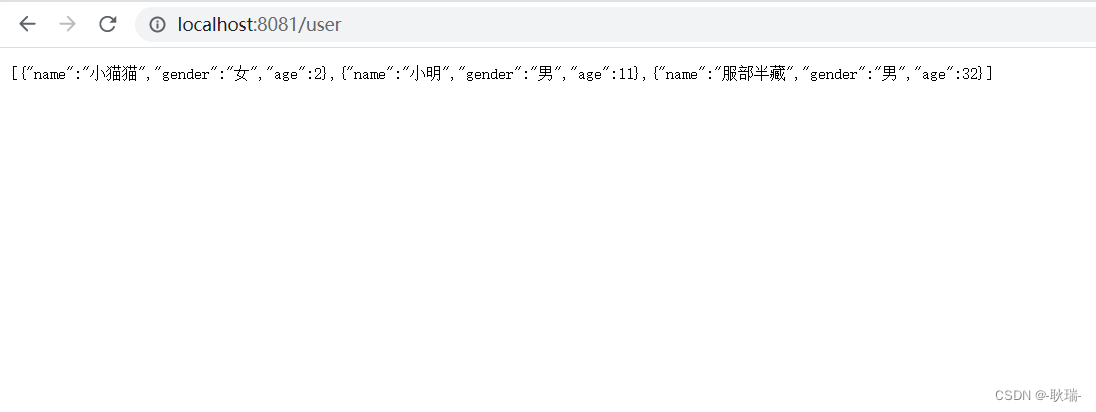
更多推荐
 已为社区贡献23条内容
已为社区贡献23条内容









所有评论(0)